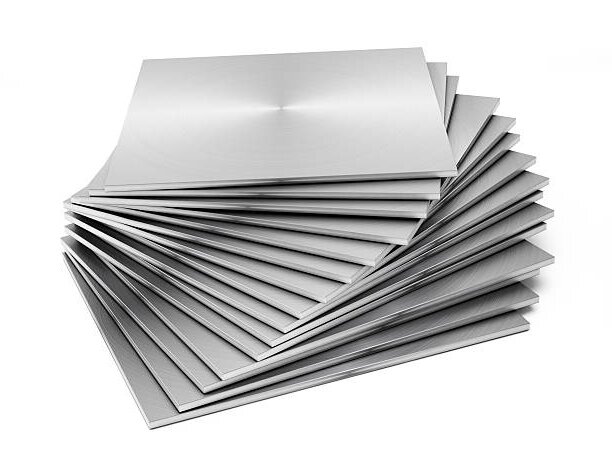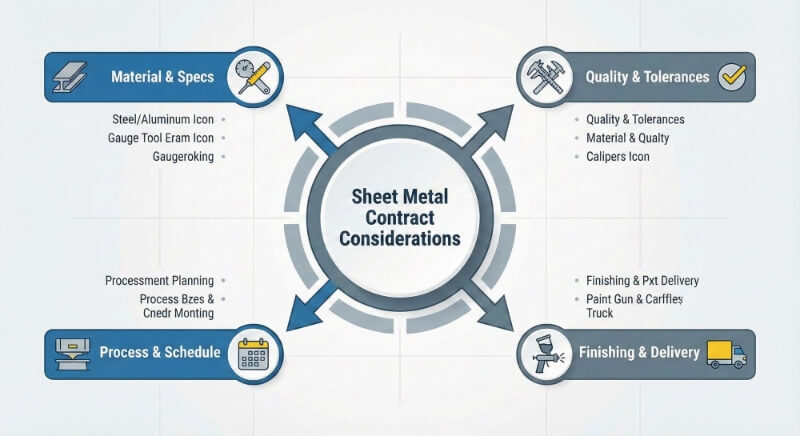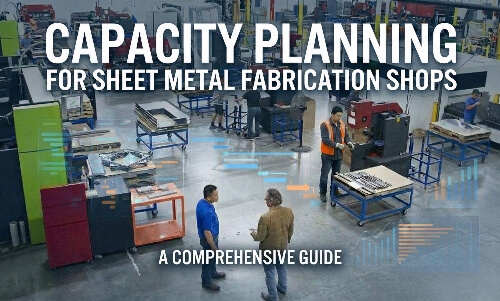Selecting the right aluminum grade is a common challenge. You need a material that meets your project’s strength, corrosion resistance, and machinability requirements. The wrong choice can lead to part failure, increased costs, and production delays. This guide simplifies selection by breaking down the most common aluminum grades and their uses.
Aluminum grades are numbered series that group alloys by their central element. Each series offers different properties. For example, the 6000 series provides good strength and weldability. The right grade balances your needs for strength, corrosion resistance, and how easy it is to machine.
We will explore the key aluminum series next. Read each section for properties, pros, and typical uses.

What Aluminum Grades Mean?
Aluminum grades fall into two main groups: wrought alloys and casting alloys. Wrought alloys are shaped by rolling, extrusion, or forging. They are often organized into series like 1xxx, 2xxx, 3xxx, 5xxx, 6xxx, and 7xxx. Each series is based on its main alloying element. This affects properties such as purity, strength, corrosion resistance, and how easy the metal is to work with.
Casting alloys are made by pouring molten aluminum into molds. This allows for complex shapes. They are classified by their main alloying elements, like silicon, copper, or magnesium. Casting alloys are ideal for detailed designs or thick sections. They also provide good wear resistance and stability.
Classification of Aluminum Grades
Aluminum alloys are grouped based on how they are made, their treatment, and standard codes. Understanding these groups helps engineers and designers choose the right alloy for the right job, ensuring strength, durability, and easy fabrication.
Wrought vs. Cast Aluminum
Wrought aluminum is shaped by rolling, extrusion, or forging, which strengthens and uniformizes the metal. Wrought alloys are available in sheets, plates, rods, and profiles and are ideal for structural parts, panels, and enclosures.
Cast aluminum is made by pouring molten metal into molds, allowing for complex shapes and thick sections. Although cast aluminum can be less strong than wrought aluminum, it is often used for automotive parts, machinery housings, and decorative items.
Heat-Treatable vs. Non-Heat-Treatable Alloys
Some aluminum alloys gain strength from heat treatment. Heat-treatable alloys, such as the 2xxx, 6xxx, and 7xxx series, become stronger through processes like solution heat treatment and aging. They are perfect for aerospace, automotive, and structural uses.
Non-heat-treatable alloys, like 1xxx, 3xxx, and 5xxx series, mainly gain strength from work hardening. They are usually more corrosion-resistant and easier to shape or weld. These alloys are standard in marine equipment, roofing, and general construction.
Standard Designations and Codes
Aluminum alloys have standardized codes to identify them. Wrought alloys use a four-digit system. The first digit shows the primary alloying element. For example, 1xxx is nearly pure aluminum, 2xxx is copper-based, 5xxx is magnesium-based, and 6xxx is magnesium-silicon-based.
Casting alloys use a different system, often starting with “A” or “B,” followed by numbers that describe the alloy’s makeup and characteristics. These codes help engineers, manufacturers, and buyers quickly understand an alloy’s properties and applications.

Common Aluminum Series
Aluminum comes in several series, each designed with specific alloying elements. These affect strength, corrosion resistance, and the ease of shaping the metal.
1000 Series: Pure Aluminum
The 1000 series is nearly pure, with at least 99% aluminum. It resists corrosion very well and conducts heat and electricity efficiently. This series is soft and easy to bend or shape. Its strength is lower, so it is unsuitable for heavy load-bearing parts.
It is commonly used in chemical equipment, food processing, and electronics. Its easy formability is ideal for roofing, siding, and decorative elements.
2000 Series: Aluminum-Copper Alloys
The 2000 series is copper-based. It has high strength and good fatigue resistance, but lower corrosion resistance. Heat treatment can further improve its stability.
This series is used in aerospace parts, aircraft structures, military vehicles, and high-performance transportation, where the strength-to-weight ratio is critical.
3000 Series: Aluminum-Manganese Alloys
The 3000 series contains manganese. It offers moderate strength, excellent corrosion resistance, and good workability. It cannot be strengthened by heat treatment, but can be strengthened by cold working.
Typical uses include roofing panels, siding, gutters, beverage cans, kitchen equipment, and storage tanks.
5000 Series: Aluminum-Magnesium Alloys
The 5000 series contains magnesium, which boosts corrosion resistance, especially in marine environments. It offers medium to high strength and is highly weldable.
It is widely used in boat hulls, shipbuilding, and automotive panels, where strength and corrosion resistance are essential.
6000 Series: Aluminum-Magnesium-Silicon Alloys
The 6000 series combines magnesium and silicon. It provides good strength, corrosion resistance, and formability. Heat treatment further enhances its mechanical properties.
It is used in structural components, architectural panels, window frames, truck bodies, and railway carriages.
7000 Series: Aluminum-Zinc Alloys
The 7000 series is zinc-based, often with magnesium. It is powerful and suitable for aerospace, military, and high-performance automotive parts. Because corrosion resistance is moderate, surface treatments are often applied.
8000 Series: Specialized Aluminum
The 8000 series includes aluminum-lithium, aluminum-iron, and other specialized alloys. Due to its conductivity, aluminum is used in packaging, like aluminum foil, and in electrical applications. Some specialized alloys are also used in lightweight transportation.
Comparison of the Aluminum Series
The following table compares the main aluminum series. It shows their key alloying elements, strength, corrosion resistance, formability, and typical applications, making it easier to choose the right grade for your project.
| Series | Main Alloying Element | Strength | Corrosion Resistance | Formability | Typical Applications |
|---|---|---|---|---|---|
| 1000 | Pure Aluminum | Low | Excellent | Excellent | Roofing, siding, chemical equipment, electrical components |
| 2000 | Copper | High | Moderate | Moderate | Aerospace structures, aircraft parts, military vehicles |
| 3000 | Manganese | Moderate | Good | Excellent | Roofing, siding, beverage cans, kitchen equipment |
| 5000 | Magnesium | Medium-High | Excellent | Good | Marine equipment, automotive panels, shipbuilding |
| 6000 | Magnesium-Silicon | Medium-High | Good | Good | Structural components, window frames, transportation equipment |
| 7000 | Zinc | Very High | Moderate | Moderate | Aerospace, military, high-performance automotive parts |
| 8000 | Specialized (Li, Fe) | Varies | Good-Excellent | Varies | Packaging, aluminum foil, electrical applications |
Choosing the Right Aluminum Grade
Picking the right aluminum grade ensures your product performs well, lasts long, and can be manufactured efficiently. Understanding these factors helps engineers, designers, and manufacturers make intelligent decisions.
Consider the Application
The first step is to consider how the part will be used. The 2xxx and 7xxx series are ideal for high-strength needs, such as aerospace components or structural frames.
The 5xxx and 6xxx series provide excellent corrosion resistance for parts exposed to moisture or salt, such as marine equipment or outdoor structures.
Parts that need complex bending, forming, or welding often benefit from 1xxx, 3xxx, or 6xxx series because they are easy to work with. Choosing a grade that matches your mechanical and environmental needs reduces the risk of failure and rework.
Factor in Cost
Aluminum grades differ in price based on composition and processing. Pure aluminum and non-heat-treatable alloys, like 1xxx and 3xxx series, are usually more affordable. Heat-treatable and high-strength alloys, such as 2xxx, 6xxx, and 7xxx series, cost more due to extra alloying and processing.
Material cost is only part of the picture. Some alloys need heat treatment, special welding, or machining adjustments, which can add to the total project cost. Balancing performance with budget ensures cost-effective production.
Check Availability and Manufacturing Compatibility
Material availability and how well the alloy works with your manufacturing process are also important. Some high-strength or specialized alloys may have limited stock or longer lead times, which can delay production.
Certain alloys are easier to work with depending on the process. For instance, the 6xxx series is excellent for extrusion and bending, while the 2xxx and 7xxx series need careful machining and surface treatment to prevent cracking or corrosion. Confirming availability and process compatibility helps avoid delays, defects, and extra costs.
Conclusion
Choosing the right aluminum grade is a key decision for your project. Each series offers a different strength, corrosion resistance, and workability mix. Always match the alloy to your part’s function, production process, and environment.
Are you looking for the right aluminum grade for your project? Contact us today for expert advice and fast, reliable solutions tailored to your needs.
Hey, I'm Kevin Lee

For the past 10 years, I’ve been immersed in various forms of sheet metal fabrication, sharing cool insights here from my experiences across diverse workshops.
Get in touch

Kevin Lee
I have over ten years of professional experience in sheet metal fabrication, specializing in laser cutting, bending, welding, and surface treatment techniques. As the Technical Director at Shengen, I am committed to solving complex manufacturing challenges and driving innovation and quality in each project.




